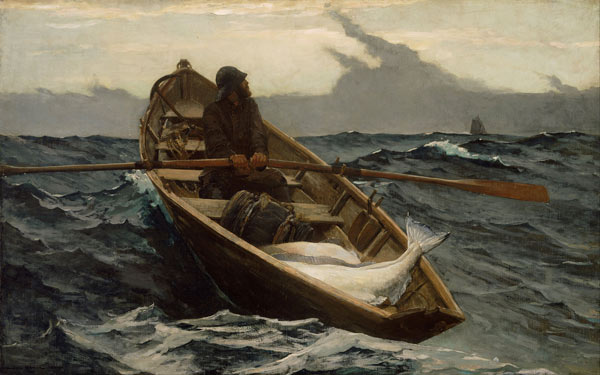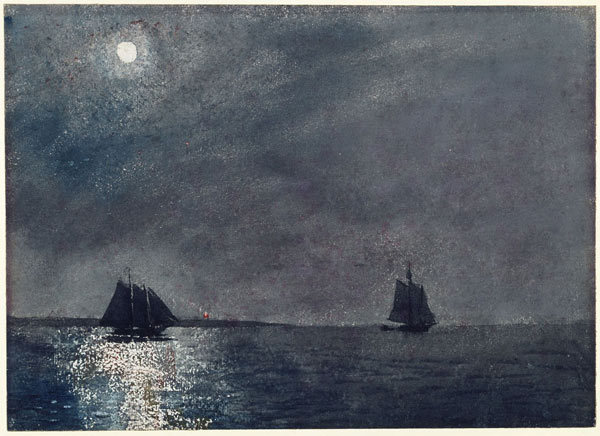Winslow Homer was born on February 24, 1836, in Boston, Massachusetts. When Homer was six, the family moved to Cambridge, Massachusetts. His mother was a painter and she encouraged Winslow to be artistic. When he was 19 years old, Winslow became an apprentice at John Bufford’s lithographic firm. He started by copying other artists’ designs. Later, he submitted his own original drawings to magazines, such as Ballou’s Pictorial and Harper’s Weekly to be published. In 1859, Homer moved to New York City and worked as a freelance illustrator. The next year, several of his paintings were displayed at the National Academy of Design.
In 1865, he was elected to the National Academy of Design. In 1866, after the end of the Civil War, his painting called Prisoners from the Front was exhibited at the academy. In 1869, Homer completed Long Branch, New Jersey, which depicted fashionable women walking along the seashore. In 1872, he completed Snap the Whip (1872), which depicted children playing in a meadow.
 |
| |
| Long Branch, New Jersey (1873) |
In 1873, Homer started to work with watercolor. During this time, he made numerous paintings that depicted women as single figures. Later in the 1870s, Homer began painting nature scenes in watercolor. He focused on reflected light, which added complexity to the paintings.
In 1881, Homer traveled to England. He spent two years there sketching and painting in Cullercoats, a fishing port on the North Sea, where he experienced his greatest period of artistic growth. Homer was inspired by the life of the people of Cullercoats. In his work he depicted the courageous women who mended fishing nets, took care of the house, and waited for their husbands to return from sea.
In 1883, Homer returned to America. He moved to the fishing village of Prouts Neck, Maine, where he isolated himself from society. During this time, Homer began to paint seascapes. In 1884, he painted The Life Line, which depicted the rescue of an unconscious woman from a wrecked ship. Homer became increasingly interested in the sea after a trip to the Grand Banks of Newfoundland, Canada. He painted heroic men working against the mighty sea. In Fog Warning (1885), he painted a fisherman calculating the distance and the time remaining for him to get back to his home ship safely.
 |
| |
| Fog Warning (1885) |
In the 1890s, Homer became interested in painting wildlife and sport fishing. In 1891, Homer painted Huntsman and Dogs. In this work, a young hunter pauses on a hillside ruined by timbering and fire. In 1893, Winslow Homer painted The Fox Hunt. This work depicts a fox foraging for berries in the snow while being harassed by crows. In Northeaster (1895), Homer used both watercolors and oils to achieve a specific effect.
 |
| |
| Northeaster (1895) |
While Homer was sometimes referred to as a “sporting artist,” he was still interested in seascapes. Many of his late paintings show boats at the mercy of angry seas, which is thought to represent his struggle with loneliness. In 1910, Homer died alone in his home in Prouts Neck, Maine.